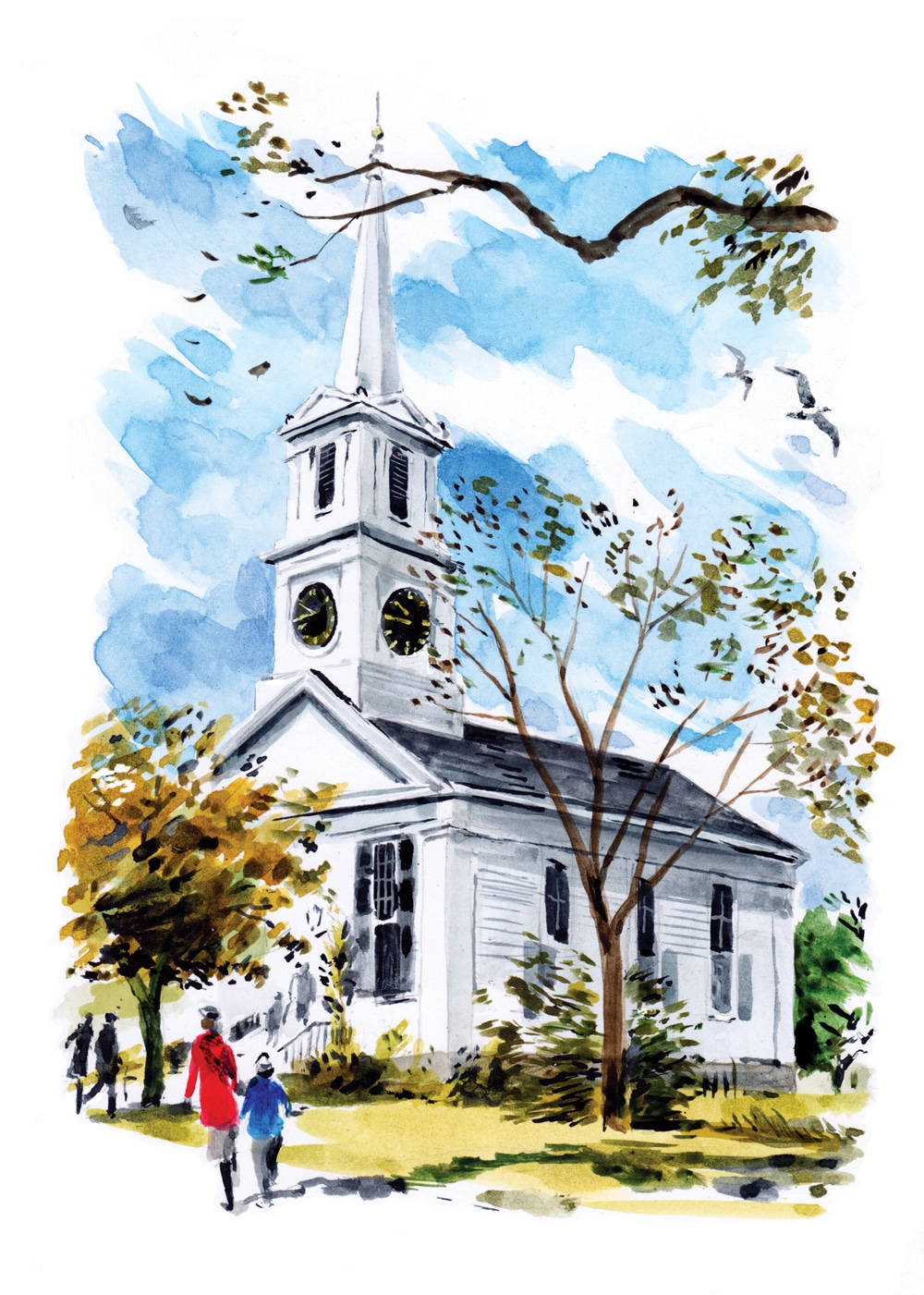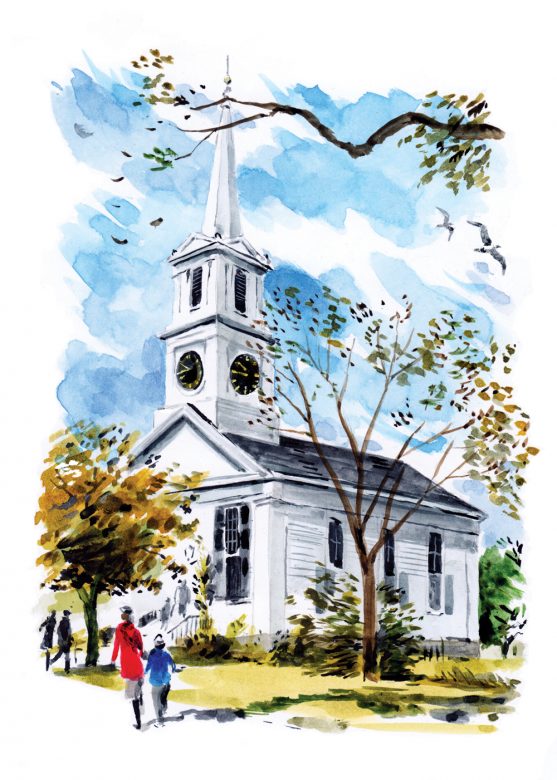Life and Chimes | First Person
Kate Whouley finds messages and meaning in the daily pealing of church bells in this thoughtful holiday essay.

Illustration by Dan Williams

In the village where I live on Cape Cod, we hear church bells—two sets, Congregational and Catholic. They do not agree, precisely, on when to strike the hour. What one begins, the other finishes. The bells in the E. Howard clock tower of the Congregationalists are practical timekeepers, and they almost always run ahead of their neighbors. The Catholic bells mark occasion as much as time. Between 5 and 10 minutes before 9 on weekdays, pealing bells—open and hopeful—summon the faithful to Mass. For me, they are a 10-minute warning: Cease puttering, prepare to enter the workaday world. By the time the Congregational bells mark 9 a.m., I am installed at my desk.
All day long, one set of bells or the other will keep me company, cuing me to make a call or make some tea, nudging me when I’m late for lunch, or too long sitting still. Sometimes—around 11, or just before 1—I hear long, low tolls, a Catholic funeral. The departed, unknown, and my religious status, unaffiliated—still, I offer up a prayer in the 10-count interval between each echoing strike. On many Saturdays, especially in spring and summer, when I hear noisy, happy tones overlaying one another I mentally congratulate another pair of newlyweds. Enduring love, I wish them, as I fold the laundry or tidy the kitchen.
For a time this year, there were no funerals, no long tolls, and no wedding bells, either. Still, I found comfort in the hours, their steadiness a solace. And oh, the hymns. It was a few minutes past noon, not quite six years ago, when I heard the first hymn. Lovely, harmonized, two strains and an Amen. Six hours later, the bells rang out again—and I moved outdoors to listen, captivated by a single, unknown tune.
At the next day’s noon, the Catholic bells rang out the Angelus: three sets of three peals, followed by one set of 10. Then, the hymn began. Another Angelus, and two more hymns at 6. Some 2,000 days later, the bells still sing, and I still pause to listen.
The sound is of a carillon; the tunes waft atop crystal-clear arpeggios, rising and falling, joining and departing the melody line. Sure, I’d wish for a stocking-capped assembly of Victorian youths—synchronized, smiling, and hanging on ropes—but alas, this is 2020. I’m not bothered by the fact that the bells are recorded. I like thinking about the someone, who, somewhere, created this beautiful music. And a contemporary bonus: Digital technology means we are spared any tinniness or static. These bells are stunning and resonant, beautiful and true.
Through open windows in the summertime, the sound is strongest, but it is in the winter when I love the singing bells the most. I move to the front of the house for the best listening, and I pause to take in the tunes. A few I recognize, and the predictability of others means I can hum along, but I can still name only a handful. That is, until the 25th of December, when the carols begin. There’s one at noon and often two at 6: “Hark! The Herald Angels Sing,” “The First Noel,” “O Little Town of Bethlehem.” For the 12 days between Christmas and the Feast of the Epiphany, the bells will play lilting arrangements of ancient, familiar tunes. Listening—unaffiliated or not—I believe there is some joy in the world.
For nearly 30 years, the bells have been my companions and my teachers. Time passes, they pronounce with every hour. But this moment, right now, at 6 o’clock in the bleak winter dark, they remind me: Here is beauty, and the sound of light.


